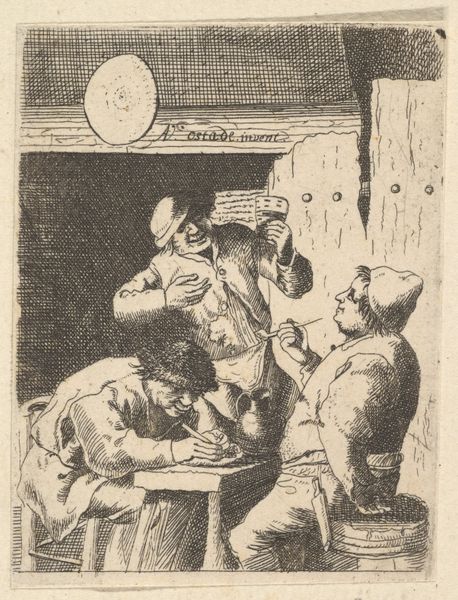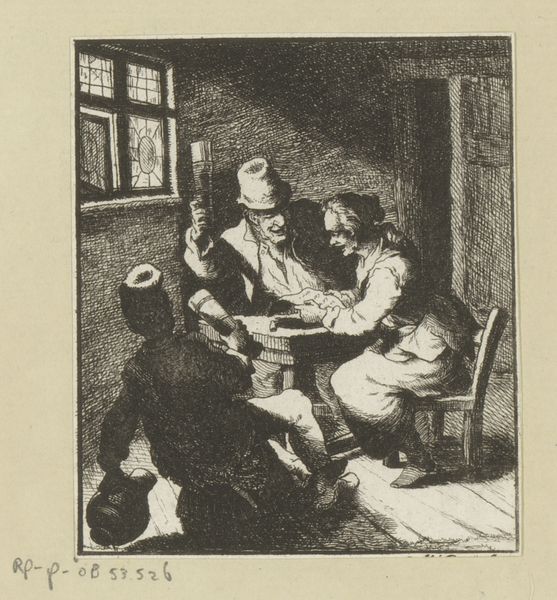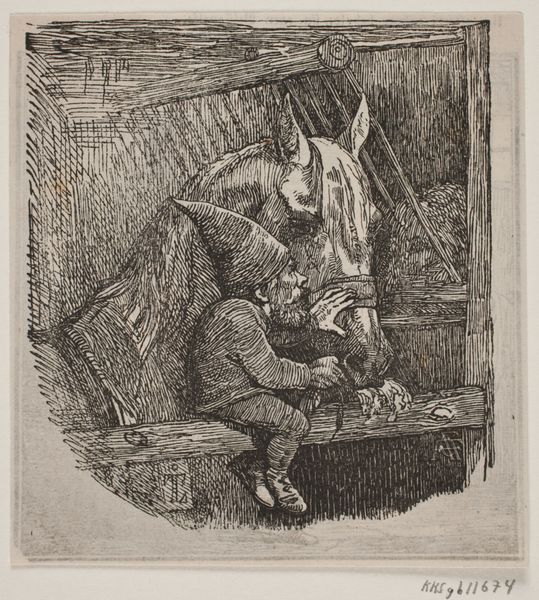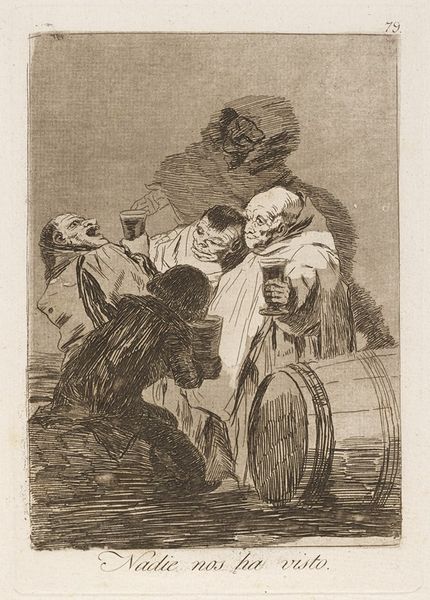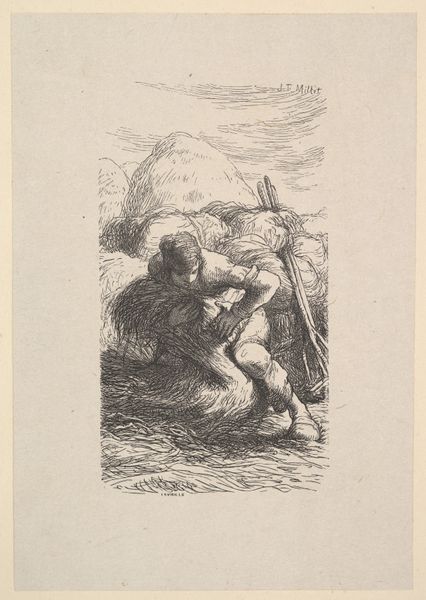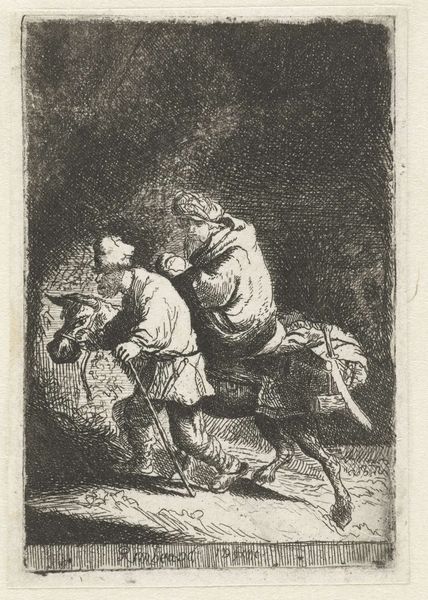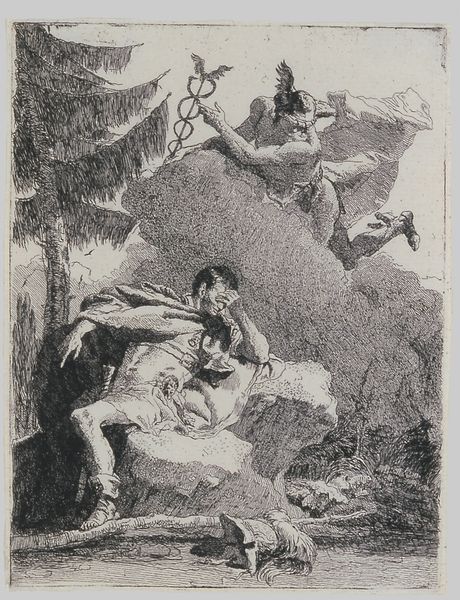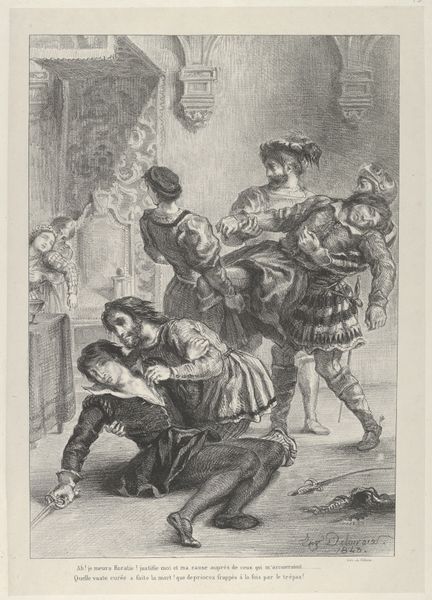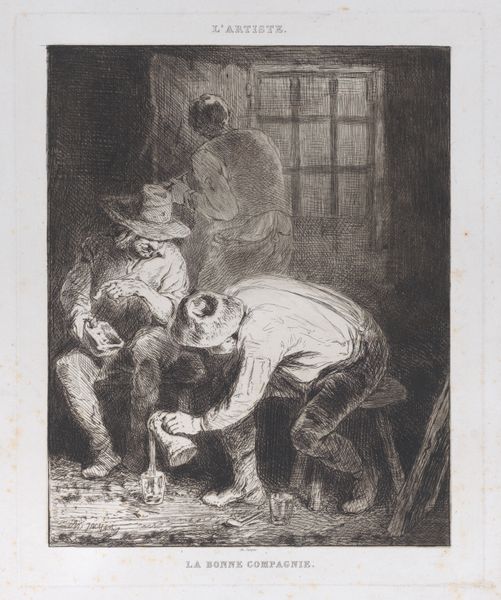
Dimensions: height 94 mm, width 80 mm
Copyright: Rijks Museum: Open Domain
Curator: Right, let's look at Johann Andreas Benjamin Nothnagel's etching, "Drie vechtende mannen"—or "Three Fighting Men"—created sometime between 1739 and 1804. Editor: Whoa. My first impression? This looks like a bar fight gone terribly wrong. There's so much energy, and also utter chaos rendered in stark lines. It's practically theatrical, don't you think? Curator: Absolutely. Considering it's an etching, let's focus on that energy and the labor behind it. Each line had to be deliberately etched into the metal plate. Imagine the precision to capture such frenzied action! Editor: And it looks like there is some etching, judging by that texture on the barrels near the right foreground, the artist has painstakingly rendered all the different values of shade into some cross-hatch to convey this very tactile effect. I would love to look closely through a microscope to discover how it's rendered! It has this chaotic appeal about it that you mentioned but, from a production standpoint, all those scratches had to be made methodically to suggest spontaneity and frenzy in this scene. Curator: Good point. What's intriguing is the potential narrative at play here. Genre paintings often captured everyday life, but there’s also something theatrical and performative about the postures of each guy in the foreground; you know like, why is the barrel broken and laying at this perspective? Is there a social commentary embedded in this kind of drama or is it for the sheer fun of an action-based tableau? Editor: I would say both, because labor is often perceived to have an order of the structure embedded in its purpose. The labor performed here depicts unruly bodies; but is that a representation of physical effort in its bare manifestation, as bodies intertwine with material chaos? Also I wonder who this kind of subject was produced for back then: upper-middle class customers perhaps? How were these printed to achieve their distribution? What kinds of inks or printing facilities existed in those days to achieve that type of production output for prints? It's always those manufacturing questions I have in mind when I appreciate images produced like this. Curator: That’s a compelling angle—framing the scene not just as an image, but as an item manufactured and distributed with its set of values for consumption at the time of its use. Perhaps we can continue tracing the life of this image and reflect on what can we learn when materials, labor and society converge. Editor: Agreed, I'm finding myself much more aware of the image now when factoring its potential conditions of fabrication. Thanks.
Comments
No comments
Be the first to comment and join the conversation on the ultimate creative platform.


